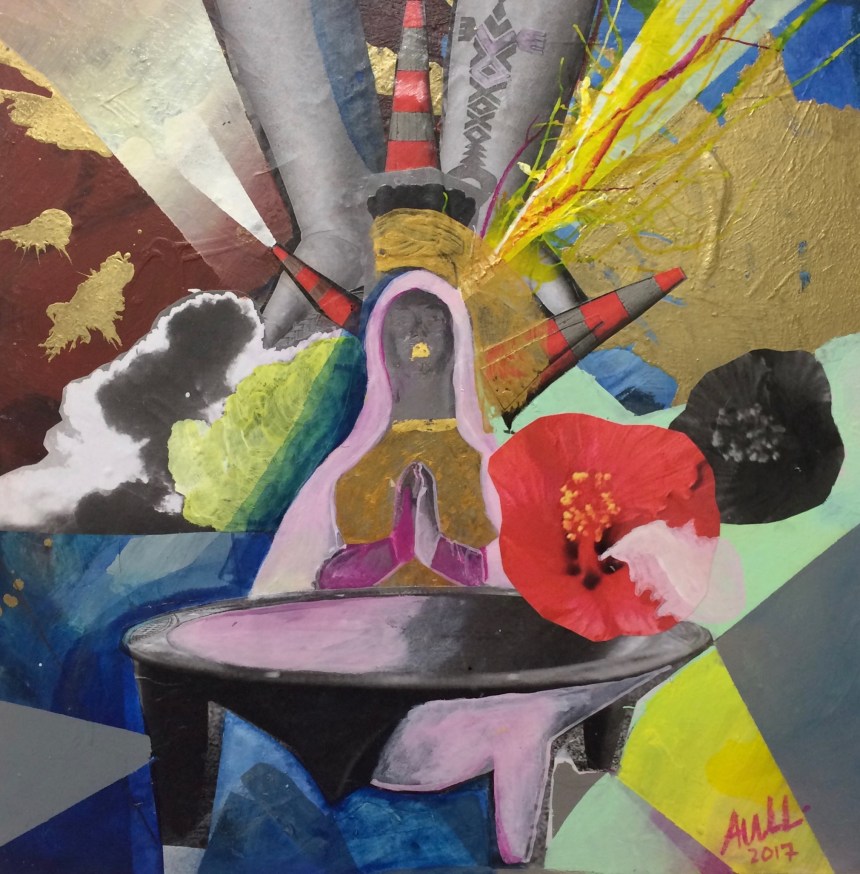 11 September, 2015 – Suva, FIJI – Four Fijian New Zealand and Australian based women artists will congregate in Suva, Fiji next week for a creative research project inspired by the practice of Fijian female tattooing. This is the first time a research project is being undertaken to delve into the lost tradition of Fijian female tattooing of veiqia.
11 September, 2015 – Suva, FIJI – Four Fijian New Zealand and Australian based women artists will congregate in Suva, Fiji next week for a creative research project inspired by the practice of Fijian female tattooing. This is the first time a research project is being undertaken to delve into the lost tradition of Fijian female tattooing of veiqia.
The Veiqia Project has gathered seven contemporary Fijian women artists engaged in Australia and New Zealand to participate in shared research activities and Museum visits to inform the development of new artwork for an exhibition due to take place in Auckland, New Zealand in March 2016. At its heart, The Veiqia Project involves nine Fijian women – seven artists and two curators – on a journey of artistic and cultural enquiry.
Four of the seven artists will travel to Suva from the 14th to 28th September to undertake research, meetings and participate in events.
New Zealand-based artists Margaret Aull, Joana Monolagi and Luisa Tora will join Australian-based Dulcie Stewart on the trip. Project and exhibition curators Tarisi Vunidilo and Ema Tavola, both proud i-taukei women from the province of Kadavu are excited about the prospects of their research in Fiji.
Through a shared online research forum and time spent with Fijian collections at museums in Australia, Fiji and New Zealand, the artists have generated an indigenous research archive driven by personal, artistic and relational connections. The project has drawn significant support from Auckland Museum, Fiji Museum, the Fijian Art Project, practitioners, supporters, friends and family engaged both on and offline.
“Fijian women used to have a very proud ancient tradition of veiqia, where girl children were tattooed when they reached puberty. This tradition has been lost over time due to colonization and other factors. Veiqia has intrigued many of us for a long time and we are very excited to come back home to Fiji to research more about this ancient art and to discuss and share with other Fijians their views and stories about this once practiced art”, Ms. Tavola said.
“We are grateful to Creative New Zealand for significant funding towards this research enabling us to bring our Fijian women artists together to collaborate on this project”, she added.
“We are inviting everyone to come to our organised events to share with us in story- telling and talanoa about our traditions and research that we hope one day will be revived. Come and take ownership of discussions surrounding this ancient female artform”, she said.
The artists will hold a Veiqia panel discussion at the FNU campus on Thursday, 17th September and an open day on Saturday, 19th September at the Fiji Museum Veranda and will include visitations to artists at Tagimoucia Gallery, Fiji Corrections Unit, Suva and dialogue with Fijian tattooist Billy Blaze.
Please see below for more details on the exhibition, visit https://pimpiknows.com/theveiqiaproject/ or contact Tarisi Vunidilo 7517241 for more information.
The Veiqia Project: Panel Discussion
Hear from the curators and artists behind a creative project that connects artists, Museum collections and Fijian tattoo.
Speakers: Margaret Aull, Joana Monolagi, Dulcie Stewart, Ema Tavola, Luisa Tora, Tarisi Vunidilo with guest speaker Julia Maga’au Gray
Date: Thursday 17 September, 2015
Time: 6 – 8pm
Venue: FNU Campus Raiwai, Carpenter Street
Enquiries: Theresa Koroi, ph: 9987150, email: Theresa.Koroi@fnu.ac.fj
The Veiqia Project: Investigating our tattooed histories
Come and learn about the research The Veiqia Project has uncovered, watch Melanesian tatu artist Julia Mage’au Gray demonstrate traditional hand-poke tattoo style, get involved with fun art activities, hear from The Veiqia Project artists and the ways Museum collections can inspire new understandings of our Pacific art histories.
Date: Saturday 19 September, 2015
Time: 10am – 3pm
Venue: Fiji Museum Veranda
Image credit: Sangeeta Singh, with permission from Auckland Museum









































































